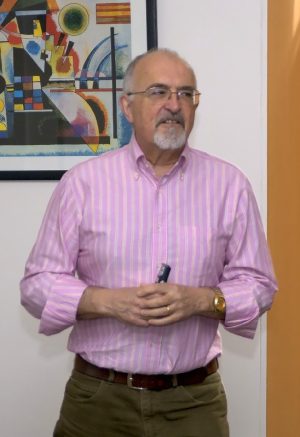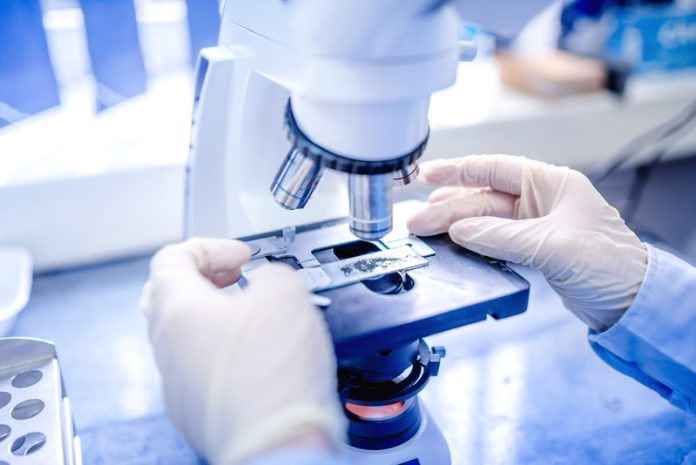An expert from the Faculty of Sciences at the University of Lisbon reflects on the gap between European science research and industrial utilisation
European science and technology face a new paradigm – to perform research with very well-defined targets to resolve problems of society and development, bounded by environmental and health restraints. Many new fields and materials have emerged in recent years, and to respond to current needs implies the use of solid competences but open minds. As James Dewar (1842-1923), “Minds are like parachutes. They only function when they are open”. Society needs scientists (and entrepreneurs) that can absorb this new paradigm.
Thermophysics is the science and technology of some of the most important properties of materials. Thermophysical properties are all material properties affecting the transfer and storage of heat, that vary with the state variables temperature, pressure and composition, without altering the material’s chemical identity. Thermophysical properties play an important role in several processes in the chemical, extraction and manufacturing industries, especially in those involving simultaneous heat and mass transfer. Most of the problems that affect our society need values of these properties to design control and characterise new products and processes, to replace unacceptable processes and compounds and to optimise energy balances and efficiency.
Until the 1960s much of the experimental work on the thermophysical properties of fluids was devoted to the development of methods for the measurement of the properties of simple fluids under moderate conditions. By the end of the 1960s, a few methods had emerged that had both a rigorous mathematical description of the experimental method and technical innovation to render measurements precise enough to rigorously test theories of fluids for both gas and liquid phases [1].
After those early successes, there has been a divergence of experimental effort from the earlier thrust and, in the future, there needs to be a focus on in-situ measurement of properties for process fluids. These arguments are based upon the balance between the uncertainty of the results and their utility and economic value as well as upon technical developments, which have provided reliable and robust sensors of properties. Leading scientists (Kestin, Wakeham, Nagashima, Sengers, among others) paved the way to the actual state of thermophysics, namely in one area of fundamental interest for the future – the thermophysical properties of nanosystems (nanomaterials and nanofluids).

What is the situation now?
To make good measurements of thermophysical properties is difficult and time-consuming and it is not fashionable not economically attractive for industries and funding agencies. The need for accurate data on thermophysical properties of fluids has been replaced to a certain extent by alternative methods of properties calculation, mostly based on computer simulation or prediction/estimation methodologies (cheaper, but risky).
Reasons for this can be summarised in the following items:
- Change of needs – From laboratory work to in-situ measurements;
- Change of paradigm – Fit for purpose instead of best uncertainty;
- Change of financing priorities from state funding agencies – Priority to industry-driven/sponsored research;
- Decrease for users in industry of the added-value of property data of good quality and;
- The use and misuse of commercial equipment, with methods of measurement not adequate to the object systems.
The new research trends in thermophysics are: 1) Materials for nuclear engineering; 2) Materials for thermal storage; 3) Planetary bodies (thermal properties and heat flux); 4) Molten salts for solar applications; 5) Thermal properties of reservoir rocks; 6) Soft materials (textiles, food products, body fluids); 7) Steel/alloy industry (casting products and special alloys); 8) Nanofluids and IoNanofluids (non-aqueous and high temperature);9) Chemical products conformal with REACH; 10) Thermophysical properties of seawater (surface and deep); New lubricants. International Cooperation is fundamental.
In line with the challenges that are outlined in Horizon 2020, EURAMET has identified that the main social and economic triggers driving the development of thermophysical measurements are energy, environment, advanced manufacturing and processing, safety, security, and health. Thereby metrology for thermophysical properties will contribute substantially to the six priorities “Societal Challenges” which are the focus of Horizon 2020 [2].
The Molecular Thermophysics and Fluid Technology Group of Centro de Química Estrutural is an internationally recognised group in thermophysics of fluids and materials, with a strong experience on experimental measurement, modelling and correlation of thermophysical properties, designing equipment and sensors for fundamental and industrial applications. In the recent years, most of this research was directed to cutting-edge research, which includes ionic liquids, nanomaterials and IoNanofluids and new engineering fluids.
One of the main advantages of our know-how is the possibility of implement the cross-fertilisation of these research fields to resolve delicate problems, not only at a molecular level but also in the possible industrial applications. Some examples of this research, patented when applicable, are: New spectrally selective coatings for solar paints, will allow us to produce films at low cost; Development of new nano-based heat transfer fluids, making a solar collector and heat exchangers more energy efficient obeying the environmental goals set by the World Energy Council; Measuring viscosity of new molten alloys for high-tech applications; Measuring thermal conductivity of humid air for high pressure turbines; Developing metal-film sensors for high temperature in situ measurements in incinerators.
In summary, our experience paves the way to a strong collaboration with other research groups and industrial companies in the frame of Horizon 2020. The strength of European economy and the welfare of our society depend strongly on this approach. We are prepared to make Thermophysics to contribute to this effort, resolving problems of the public sector.
References
1 W. A. Wakeham et al, Int. J. Thermophys., 28, 372-416 (2007)
2 J.R. Filtz, J. Wu, C. Stacey, J. Hollandt, C. Monte. B. Hay, J. Hameury, M. A. Villamañan, E. Thurzo-Andras, S. Sarge, “A European Roadmap for Thermophysical Properties Metrology”, Int J Thermophys (2015) 36, 516-528
Please note: this is a commercial profile
Carlos A. Nieto de Castro
Vice-President Centro de Química Estrutural
Group Leader Molecular Thermophysics and Fluid Technology
Departamento de Química e Bioquímica
Faculdade de Ciências da Universidade de Lisboa
Tel: +351 217 500 918
https://ciencias.ulisboa.pt/perfil/cacastro
http://groups.ist.utl.pt/~cqe.daemon/members-contacts/research-groups-2/205-2/











